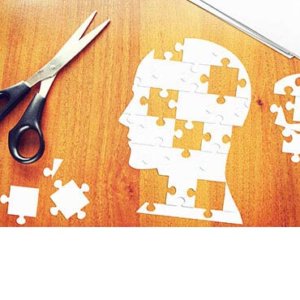- 1.1 Explain the basic concept of organizational behavior and why it is important to organizations.
- 1.2 Identify the historical roots and major behavioral science disciplines that contribute to organizational behavior.
- 1.3 Describe the role of management in organizational behavior.
- 1.4 Identify current and emerging trends in the field of organizational behavior.
Organizational Behavior
Organizational behavior (OB) is a discipline that seeks to understand why individuals and groups behave in certain ways and how these behaviors impact the organization as a whole. Throughout this course, you will explore some of the areas that impact organizational behavior, including employee diversity, attitudes, values, personality, and perceptions. You will also look at ways managers work to motivate employees, cultivate effective teams and teamwork, foster effective communication, and embody and promote strong leadership skills. Furthermore, you will examine management’s role in resolving conflicts, implementing an organizational structure, and promoting an organizational culture that will help the company meet its overall goals.
Learning Objectives/
- 2.1 Identify key groups of diverse workers including factors based on demographics, economics, disabilities, religion, and sexual orientation.
- 2.2 Recognize that diversity includes easily observable differences between people and deeper behavioral differences.
- 2.3 Discuss key reasons why organizations create policies and practices to diversify their workforce.
- 2.4 Explain how organizations can create environments that promote and support inclusion.
- 2.5 Identify key pieces of legislation relating to diversity in the workplace.
- 3.1 Explain how personality traits can predict how individuals will behave and interact with others in an organization.
- 3.2 Describe how attitudes affect job satisfaction and performance.
- 3.3 Describe how values determine courses of action and outcomes in organizations.
- 3.4 Define the perception process and its role in determining attitudes and behaviors.
- 4.1 Explain motivation processes including content and process theories.
- 4.2 Explain need motivation theories, such as Maslow’s Hierarchy of Needs, ERG Theory, and Herzberg’s Two Factor Theory.
- 4.3 Describe three types of equity theory of motivation in the workplace.
- 4.4 Define the basic premises of the expectancy theory of motivation.
- 4.5 Explain how the goal-setting theory of motivation differs from the needs, equity, and expectancy theories.
- 4.6 Describe different ways that managers use rewards to motivate people based on their individual differences.
- 5.1 Compare different types of teams in organizations.
- 5.2 Identify factors that determine team effectiveness and performance.
- 5.3 Describe the stages of team development.
- 5.4 Identify the advantages of team decision making in an organization.
- 6.1 Describe the basic communication model.
- 6.2 Compare types of communication channels in organizations.
- 6.3 Describe informal and formal communication networks within organizations.
- 6.4 Identify key barriers to effective communication.
- 6.5 Identify the elements of effective cross-cultural communications.
- 7.1 Explain the importance of the leadership role in organizations.
- 7.2 Describe traditional models of leadership, such as trait, behavioral, situational, and contingency.
- 7.3 Describe contemporary models of leadership, such as leader-member exchange theory, charismatic, values-based, and shared leadership.
- 7.4 Discuss characteristics of leadership in different cultures.
- 8.1 Identify common types and levels of organizational conflicts, including substantive, emotional, interpersonal, functional, and cultural.
- 8.2 Explain the stages of conflict management.
- 8.3 Describe the negotiation process.
- 8.4 Identify common types of negotiation strategies and bargaining approaches.
- 9.1 Define basic organizing concepts such as hierarchy, division of labor, span of control, and chain of command.
- 9.2 Identify basic organizational structures.
- 9.3 Describe the organizational design process including organizing and coordinating work.
- 9.4 Explain how technology supports and facilitates organizational structure and design.
- 10.1 Describe the basic characteristics and functions of organizational culture.
- 10.2 Compare the various types of organizational cultures.
- 10.3 Contrast differing approaches for shaping and managing organizational culture.
- 10.4 Discuss the role of organization culture in facilitating organizational change and innovation.
Be the first to review “Organizational Behavior”
You must be logged in to post a comment.








There are no reviews yet.